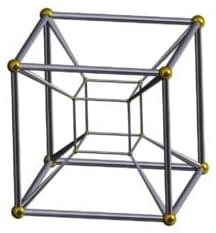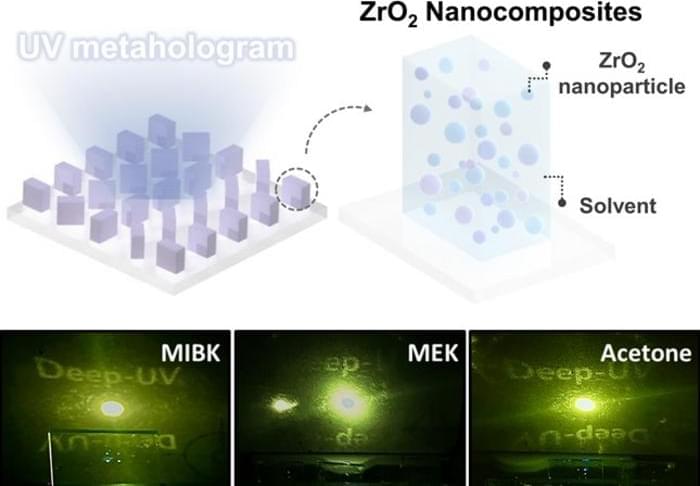Scientists have unveiled three concepts for tiny spacecraft that could voyage from Earth to meet Apophis in April 2029.
This led to the creation of a “bionic eye” that uses a combination of AI and several advanced scanning techniques, including optical imaging, thermal imaging, and tomography (the technique used for CT scans), to capture differences between parts of the scrolls that were blank and those that contained ink — all without having to physically unroll them.
Where’s Plato? On April 23, team leader Graziano Ranocchia announced that the group had managed to extract about 1,000 words from a scroll titled “The History of the Academy” and that the words revealed Plato’s burial place: a private part of the garden near a shrine to the Muses.
The recovered text, which accounted for about 30% of the scroll, also revealed that Plato may have been sold into slavery between 404 and 399 BC — historians previously thought this had happened later in the philosopher’s life, around 387 BC.
A custom-made drone designed by South Africa-based father-son duo Mike and Luke Bell has set a world record after flying just shy of 300 miles an hour.
The record-making attempt was performed on April 21, but according to the men behind the effort, the project has been in the works for months.
Luke Bell is a photographer and content creator known for his YouTube channel, which he runs with the same handle. About a year ago, Bell won the GoPro $1 million challenge after converting his versatile camera into a tennis ball and getting some amazing footage of his dog Ollie catching the ball.
From the article by Robin Hanson, a professor of economics who also holds degrees in physics and computer science.
So this remains my worry: our rapid rates of change in unconditional choices of cultural norms are not mostly driven by reason, but instead by a cultural evolution process that has…
I’ve been reading, thinking, and talking, trying to get clearer on what exactly are the culture problems I’m worried about, and how best to describe them. I seek descriptions not only easy for an outsider public to understand, but also for prestigious insider specialists to embrace.
It seems maladaptive culture might be a better name for the problem. So that is the title of this post. Also, I tentatively see four key ways to distinguish more from less problematic cases; the big problems that I fear sit mainly in one corner of that 16-cornered 4D cube of possibilities. Here are the four dimensions:
1. First, culture can work great when tied to particular relevant observable outcomes and inputs. If you want to catch more fish, it can make sense to copy the fishing-related behaviors of the people around you who catch the most fish. You need to be able to tell who gets more fish value (e.g., quantity and size) per effort invested (e.g., time and harms) and you also need to be able to tell which of these folks’ many features and behaviors are plausibly oriented to catching fish. So you can’t do this sort of cultural change until you’ve developed sufficient cultural gadgets to see these things. But once you do, things can work great.
This spring, the Hastings Center Report added a new series of essays named after the field its pieces aim to explore. Neuroscience and Society produces open access articles and opinion pieces that address the ethical, legal, and societal issues presented by emerging neuroscience. The series will run roughly twice a year and was funded by the Dana Foundation to foster dynamic, sustained conversation among neuroscience researchers, legal and ethics scholars, policymakers, and wider publics.
The first edition of the series focuses on the topic of research studies and what is owed to people who volunteer to participate in clinical trials to develop implantable brain devices, such as deep-brain stimulators and brain-computer interfaces.
Imagine you have lived with depression for most of your life. Despite trying numerous medications and therapies, such as electroconvulsive therapy, you have not been able to manage your symptoms effectively. Your depression keeps you from maintaining a job, interacting with your friends and family, and generally prevents you from flourishing as a person.
In a recent study merging the fields of quantum physics and computer science, Dr. Jun-Jie Zhang and Prof. Deyu Meng have explored the vulnerabilities of neural networks through the lens of the uncertainty principle in physics. Their work, published in the National Science Review, draws a parallel between the susceptibility of neural networks to targeted attacks and the limitations imposed by the uncertainty principle—a well-established theory in quantum physics that highlights the challenges of measuring certain pairs of properties simultaneously.
The researchers’ quantum-inspired analysis of neural network vulnerabilities suggests that adversarial attacks leverage the trade-off between the precision of input features and their computed gradients. “When considering the architecture of deep neural networks, which involve a loss function for learning, we can always define a conjugate variable for the inputs by determining the gradient of the loss function with respect to those inputs,” stated in the paper by Dr. Jun-Jie Zhang, whose expertise lies in mathematical physics.
This research is hopeful to prompt a reevaluation of the assumed robustness of neural networks and encourage a deeper comprehension of their limitations. By subjecting a neural network model to adversarial attacks, Dr. Zhang and Prof. Meng observed a compromise between the model’s accuracy and its resilience.
Graph Neural Networks (GNNs) are crucial in processing data from domains such as e-commerce and social networks because they manage complex structures. Traditionally, GNNs operate on data that fits within a system’s main memory. However, with the growing scale of graph data, many networks now require methods to handle datasets that exceed memory limits, introducing the need for out-of-core solutions where data resides on disk.
Despite their necessity, existing out-of-core GNN systems struggle to balance efficient data access with model accuracy. Current systems face a trade-off: either suffer from slow input/output operations due to small, frequent disk reads or compromise accuracy by handling graph data in disconnected chunks. For instance, while pioneering, these challenges have limited previous solutions like Ginex and MariusGNN, showing significant drawbacks in training speed or accuracy.
The DiskGNN framework, developed by researchers from Southern University of Science and Technology, Shanghai Jiao Tong University, Centre for Perceptual and Interactive Intelligence, AWS Shanghai AI Lab, and New York University, emerges as a transformative solution specifically designed to optimize the speed and accuracy of GNN training on large datasets. This system utilizes an innovative offline sampling technique that prepares data for quick access during training. By preprocessing and arranging graph data based on expected access patterns, DiskGNN reduces unnecessary disk reads, significantly enhancing training efficiency.
Adopting electrostatic assembly processes where the nanoparticles attach themselves to an oppositely charged surface is a possible way out of this dilemma. Once a monolayer is formed, the nanoparticles self-limit further assembly by repelling other similarly charged nanoparticles away from the surface. Unfortunately, this process can be very time-consuming.
While artificial methods struggle with these drawbacks, underwater adhesion processes found in nature have evolved into unique strategies to overcome this problem. In this regard, a team of researchers from Gwangju Institute of Science and Technology, led by Ph.D. student Doeun Kim (first author) and Assistant Professor Hyeon-Ho Jeong (corresponding author), developed a “mussel-inspired” one-shot nanoparticle assembly technique that transports materials from water in microscopic volumes to 2-in. wafers in 10 seconds, while enabling 2D mono-layered assembly with excellent surface coverage of around 40%. Their work was published in Advanced Materials on April 18, 2024, and highlighted as a frontispiece.
“Our key approach to overcome the existing challenge came from observing how mussels reach the target surface against water. We saw that mussels simultaneously radiate amino acids to dissociate water molecules on the surface, enabling swift attachment of the chemical adhesive on the target surface. We realized that an analogous situation where we introduce excess protons to remove hydroxyl groups from the target surface, thus increasing the electrostatic attraction force between the nanoparticles and the surface and accelerating the assembly process,” said Ms. Kim when asked about the motivation behind the unique nature-inspired approach.
Professor Junsuk Rho from the Department of Mechanical Engineering, Chemical Engineering, and Electrical Engineering, Hyunjung Kang and Nara Jeon, PhD candidates, from Department of Mechanical Engineering and Dongkyo Oh, a PhD student, from the Department of Mechanical Engineering at Pohang University of Science and Technology (POSTECH) successfully conducted a thorough quantitative analysis. Their aim is to determine the ideal printing material for crafting ultraviolet metasurfaces.
Their findings featured in the journal Microsystems & Nanoengineering (“Tailoring high-refractive-index nanocomposites for manufacturing of ultraviolet metasurfaces”).
Diagram illustrating the composition of nanocomposites for ultraviolet metasurface fabrication. (Top) Diagram illustrating the ZrO 2 nanocomposite’s role in achieving high transfer fidelity ultraviolet metaholograms. (Bottom) Comparison of UV holograms under various solvent conditions. (Image: POSTECH)









